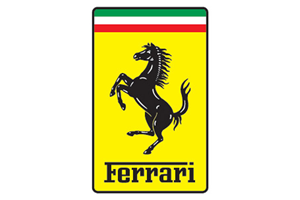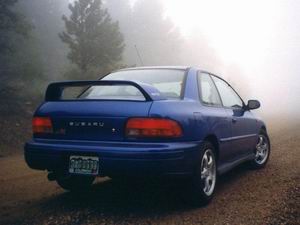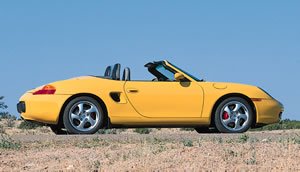


This edition of the Ferrari 212 Export is the 5 speed / Manual version and was first brought out in 1951. This was at around the same time as the introduction of the 1952 Ferrari 340 Mexico and the 1952 Alfa-Romeo Disco Volante 1900 Touring Spider.This particular Ferrari 212 has a 2562cc Naturally Aspirated Petrol powerplant with 12 cylinders in a V formation.
The 212 shares its Petrol V12 engine configuration with the likes of the 2021 Aston-Martin Valkyrie Spider 6.5 V12 and the 2021 Aston-Martin Valkyrie Coupe 6.5 V12. If you're looking for other fast cars which share the 212's Rear Wheel Drive, Cabriolet combination then how about the 1982 Fiat X1/9 1.5 8V or the 1965 Aston-Martin DB6 1965.
Weighing in at 923 kgs (2034 lbs) this makes the Ferrari 212 Export in the same weight category as the 2020 Lotus Elise Sport 220 1.8 Supercharged or the give or take 50kg.
![Mini Cooper Countryman John Cooper Works 1.5 Turbo - [2022] image Mini Cooper Countryman John Cooper Works 1.5 Turbo - [2022] image](/editionimages/2335.jpg)
The Ferrari 212 shares the same bhp with the 2022 Mini Cooper Countryman John Cooper Works 1.5 Turbo (134 bhp)
In terms of power the 2562cc 24V V12 engine produces 140 bhp (104 kW) @ 6500 rpm similar to the 2022 Mini Cooper Countryman John Cooper Works 1.5 Turbo (134 bhp) or the 2020 Audi A1 A1 Sportback 35 TFSI S tronic S line (148 bhp).
The Naturally Aspirated V12 throws out 159 lb-ft (215.5 Nm) @ 4000 rpm placing it with cars of similar torque performance figures such as the 2022 Mini Cooper Countryman John Cooper Works 1.5 Turbo (162 lb-ft) or the 2020 Audi A1 A1 Sportback 35 TFSI S tronic S line (184 lb-ft).
If one combines the weight with power or torque performance for the Ferrari 212 you can get a better idea of it's real world performance.
The Ferrari 212 has a Power to weight ratio of 151.6 bhp per ton and 172.2 lb-ft per ton. Bhp Per Ton figures of the 1951 212 competing with the 1989 Porsche 944 Turbo (176.5 bhp per ton) or the 2013 Volvo S60 T6 3.0 Turbo (176.4 bhp per ton).
If you agree with the late great Carroll Shelby then arguably an even better indicator of potential performance, Torque. Use weight as well and you end up with - Torque per ton, with the Ferrari 212 generating around 172.2 lb-ft per ton. If you're curious as to what other cars have as much torque to weight then look no further than the 2012 Porsche Boxster S PDK (197.0 lb-ft per ton) or the 2017 Seat Leon Cupra 300 DSG (197.0 lb-ft per ton).
With a 0-60mph time of 10.50 secs or a 0-100km/h (0-62mph) of 10.8 secs, this made the Ferrari 212 Export as fast as the 1993 Toyota T100 3.0 V6 (10.50 secs) the 1975 Chevrolet Vega Cosworth Twin Cam (10.50 secs) the 1971 Chevrolet Vega 2300 GT 4 Speed (10.50 secs) the or the 1963 Mercedes SL Class 230SL W113 (10.50 secs). This Ferrari 212 Export is also faster than the 2013 Renault Captur 1.2 Turbo TCe 120 EDC (10.60 secs) the 1974 Vauxhall-Opel Manta GT/E 1.9 8v (10.60 secs) the 1971 Bentley Corniche 6.8 V8 Convertible (10.60 secs) the and the 1969 Ford Capri 2000 GT (10.60 secs).
When talking about the performance of the Ferrari 212 on the drag strip it can reach a quarter mile in an estimated 15.47 secs @ 88.4 mph. Similar performance down the quarter mile can be found with the the 1968 Alpine A110 1300 (15.40 secs), the 2019 Land-Rover Defender 110 3.0 Turbo (15.40 secs), and the 2016 Ford Fiesta ST 200 1.6 Turbo (15.41 secs).
Modern performance cars are often artificially restricted to 155mph. The 1951 version of the Ferrari 212 Export has a maximum speed of 121mph.
If maxing out your car on the AutoBahn is your thing and you're wondering what's faster than the 1951 Ferrari 212 Export then how about the 2012 Seat Ibiza 1.4 FR Turbo Supercharged (132 mph), the 2011 Infiniti FX 30d 3.0 V6 Diesel (132 mph), or the 2011 Fiat Punto Evo Abarth 1.4 Turbo (132 mph).










Ford Mustang Dark Horse 5.0 V8
Engine: Naturally Aspirated Petrol | 5038cc 32v V8
Top Speed: 166 mph
0-60mph: 4.10 seconds

GMC Jimmy 5.7 V8
Engine: Naturally Aspirated Petrol | 5733cc 16v V8
Top Speed: 149.6 kph
0-100kph: 10.5 seconds



















